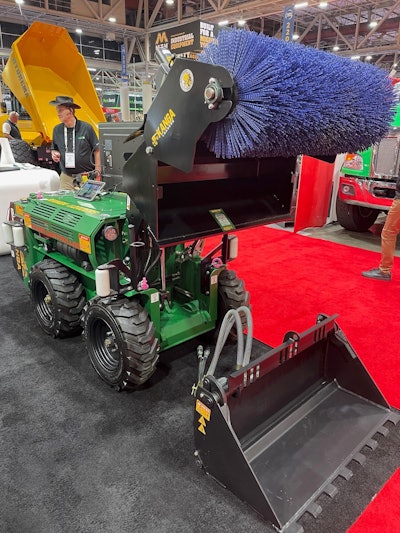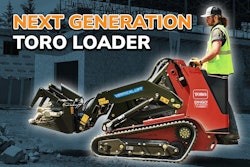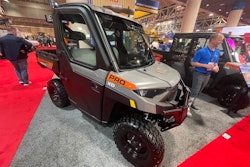
Hazardous and high-risk environments are no match for the Kanga TR825 remote control mini loader.
Built from the ground up to be a remote-controlled unit, Rod Hamm, business development and sales manager for Kanga Loaders North America, says the loader is designed to go where humans can't – from nuclear plants to grain elevators to mines.
“It’s got extra coolers on it. It’s got extra filters on it. It’s designed to be in that tight, enclosed, unhappy environment where you don’t want an operator,” he says.
The TR825 can work in manual or remote-control mode. The remote-control system features frequency-hopping spread spectrum radios with automatic frequency management, which helps maintain the radio link even if interference occurs. The durable, fully electronic receiver has no moving parts, and the IP65-rated transmitter is compact and ergonomically friendly.
While the TR825 is a dedicated track-over-wheel system, wheeled models are also available from Kanga.
Several features have been added to safeguard the machine from extreme conditions.
The loader, which is powered by a 23.5-horsepower Kubota D902 diesel engine, will immediately shut down if it detects low oil levels or excessive heat. To protect the engine further, two removable panels on the hood allow for additional engine bay ventilation, while twin hydraulic cooling fans maintain the hydraulic oil temperature for optimum performance.
The chain is coated with zinc to help protect it from seizing or rusting in highly corrosive environments such as iron ore, salt or copper mines.
Four certified lifting points allow the loader to be craned into confined spaces. It can travel at 3.3 miles per hour in default mode or 5.7 miles per hour in fast mode.
Advanced safety features include unique ID codes, redundancy control, and automatic emergency stop.
The TR825 has a universal mini mount and is compatible with a wide range of attachments. It can lift up to 1,000 pounds.
“Everything is designed to load and work off of the boom with the boom on the ground,” Hamm says. “So, if you’re using our attachments and buckets, you can scoot around and go back without having to lift the boom up. You keep that ground clearance and line of sight so that you can see what you’re doing in front of you.”










